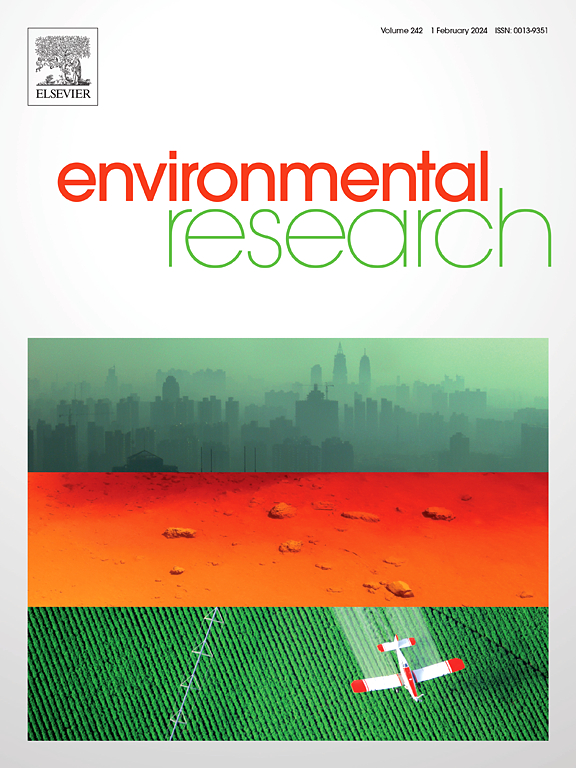Impact of altered quartz surface chemistry on mechanical properties and microstructure of geopolymers
IF 7.7
2区 环境科学与生态学
Q1 ENVIRONMENTAL SCIENCES
引用次数: 0
Abstract
The preparation of geopolymers from tailings rich in quartz typically requires activation to enhance final strength, though the underlying mechanism remains unclear. Quartz, as a common inert gangue mineral in tailings, was selected as the research subject. Quartz with varying reactivity was prepared through mechanical activation of different particle sizes and used for geopolymer synthesis, aiming to elucidate the strengthening mechanism of activated quartz on geopolymers. When the activation time was identical, quartz particles of different sizes exhibited the same soluble silicon content. However, due to the increased surface-active groups after activation, geopolymers derived from larger quartz particles (5–8 mm) achieved compressive strengths of 57.24–64.73 MPa, while those from smaller particles (0.08–0.12 mm) only reached 43.83–50.42 MPa. After activation, the main active groups on the quartz surface were the Qn (n = 1, 2, 3) structures containing non-bridging oxygens and silicon radicals. The Q1 and Q2 structures mainly provide soluble silicon in geopolymerization and have little effect on the strength of the geopolymer. While the Q3 structure can combine with the geopolymer gel through Si-O-Si bonds, reducing the porosity at the interface between quartz and geopolymer, significantly enhancing the strength of geopolymer. The results indicate that, compared to soluble silicon content of quartz, the content of active groups on its surface is the main factor influencing the performance of geopolymer. For the activation of tailings, increasing the reactivity of their surface is more effective in improving geopolymer strength than enhancing the leaching of soluble silicon and aluminum through overall activation.

蚀变石英表面化学对地聚合物力学性能和微观结构的影响
从富含石英的尾矿中制备地聚合物通常需要活化来提高最终强度,尽管潜在的机制尚不清楚。选择尾矿中常见的惰性脉石矿物石英作为研究对象。通过机械活化不同粒径的石英制备不同反应活性的石英,并将其用于地聚合物的合成,旨在阐明活化石英对地聚合物的强化机理。活化时间相同时,不同粒径石英颗粒的可溶性硅含量相同。然而,由于活化后表面活性基团的增加,较大石英颗粒(5 ~ 8 mm)的地聚合物的抗压强度为57.24 ~ 64.73 MPa,而较小颗粒(0.08 ~ 0.12 mm)的地聚合物的抗压强度仅为43.83 ~ 50.42 MPa。活化后,石英表面的主要活性基团为含有非桥接氧和硅自由基的Qn (n = 1,2,3)结构。Q1和Q2结构主要在地聚合物中提供可溶性硅,对地聚合物的强度影响不大。而Q3结构可以通过Si-O-Si键与地聚合物凝胶结合,降低了石英与地聚合物界面的孔隙度,显著提高了地聚合物的强度。结果表明,与石英的可溶性硅含量相比,其表面活性基团的含量是影响地聚合物性能的主要因素。对于尾矿的活化,提高其表面的反应性比通过整体活化提高可溶性硅和铝的浸出更能有效地提高地聚合物强度。
本文章由计算机程序翻译,如有差异,请以英文原文为准。
求助全文
约1分钟内获得全文
求助全文
来源期刊

Environmental Research
环境科学-公共卫生、环境卫生与职业卫生
CiteScore
12.60
自引率
8.40%
发文量
2480
审稿时长
4.7 months
期刊介绍:
The Environmental Research journal presents a broad range of interdisciplinary research, focused on addressing worldwide environmental concerns and featuring innovative findings. Our publication strives to explore relevant anthropogenic issues across various environmental sectors, showcasing practical applications in real-life settings.
 求助内容:
求助内容: 应助结果提醒方式:
应助结果提醒方式:


